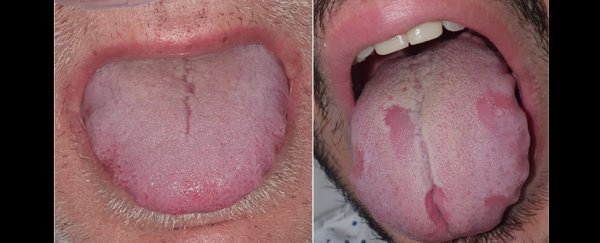A swollen or patchy tongue may be a sign of coronavirus infection, according to new research.
Researchers found that one in four coronavirus patients noticed changes to their tongue, including swelling, sores, raised bumps on the surface of the tongue, indentations, and/or discolored patches. A small percentage of patients also reported a burning sensation in their mouth.
These findings were based on observations from 666 patients with COVID-19 and mild or moderate pneumonia at a field hospital in Spain.
The symptoms were often combined with patients losing their sense of taste, which has emerged as an increasingly common sign of the virus.
It's not yet clear whether these symptoms may be widespread. Since the patients included in the study had moderate cases of infection, researchers aren't sure whether these symptoms, dubbed "COVID tongue," might also affect people with severe coronavirus, or those with milder cases.
While viral infections are known to cause symptoms in the mouth and tongue, there hasn't been much data on this phenomenon in COVID-19 patients. That may be partly because medical experts avoid spending too much time in patients' mouth due to safety concerns about the highly infectious virus.
The new findings were presented in January 26, but first published in September in the British Journal of Dermatology.
Skin rashes are also linked COVID-19, but there's a lot we don't know
This study also found that about 40 percent of patients experienced skin problems on the palms of their hands or soles of their feet. These included burning sensation, redness, peeling skin, and small bumps.
About one in ten patients also experienced a rash.
Previous research has also found coronavirus infection can affect the hands, feet, and skin. In May, dermatologists reported patients with red, swollen toes and rashes associated with COVID-19. And "long haulers" or people with prolonged symptoms, have also reported skin conditions, which may be a sign of inflammation caused by the virus.
The research is mixed on how common it is for the coronavirus to cause rashes and other dermatological symptoms.
This most recent study found more examples of skin-related symptoms than many previous studies, so there may have been other factors involved.
Scientists also don't fully understand when these types of symptoms tend to emerge, so at this point, so it's difficult to know if they might help predict more severe cases or long-term cases of COVID-19.
This article was originally published by Business Insider.
More from Business Insider:
